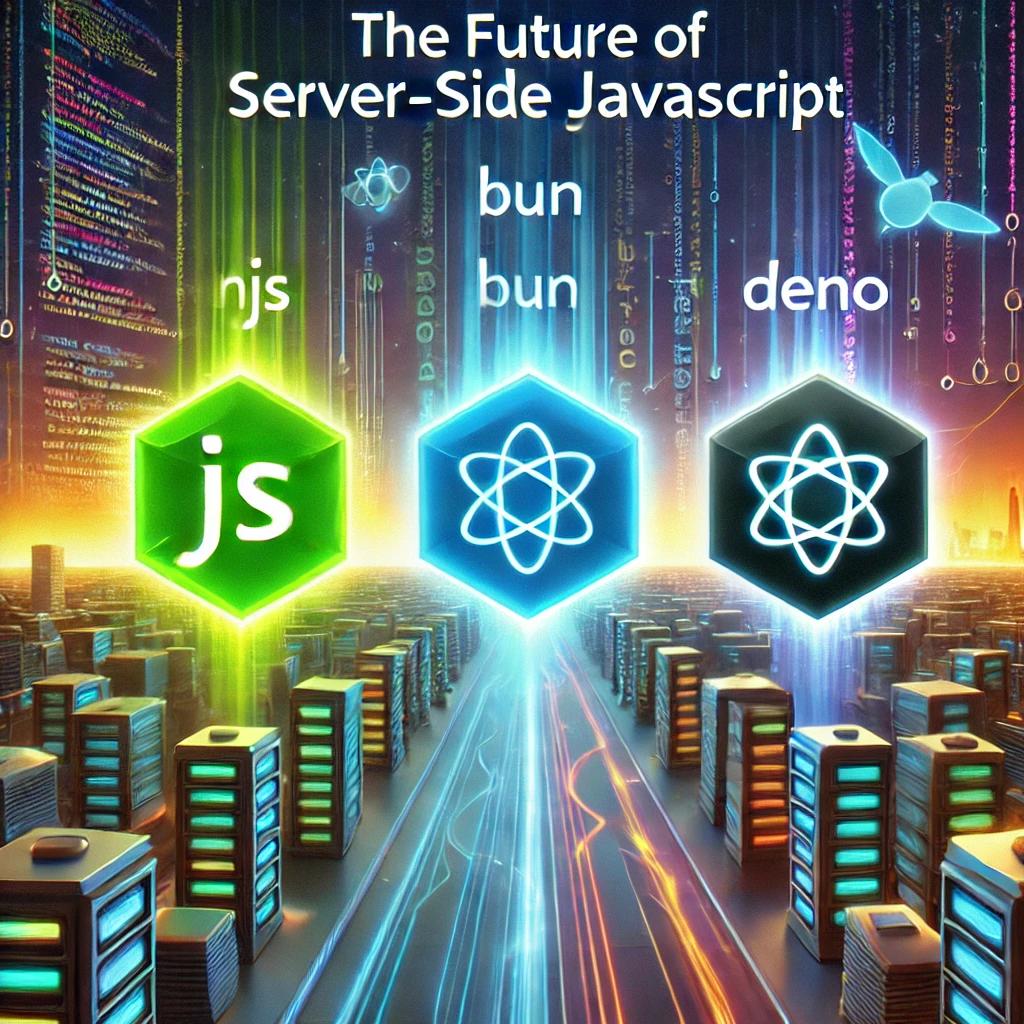From Novice to Master: A Comprehensive Guide to the Blockchain Journey

Introduction:
The digital revolution has given rise to several groundbreaking technologies, and among the most influential is blockchain. Often dubbed as the ‘next internet,’ its implications reach far beyond its beginnings with Bitcoin.
Brief Overview of Blockchain Technology:
At its essence, blockchain is a decentralized ledger or database, managed by multiple participants, known as nodes. Each piece of information added to this ledger is stored in a ‘block’ which, once verified, joins a ‘chain’ of historical records, hence the term ‘blockchain.’ The decentralized nature means that rather than being held on a singular server or controlled by a single entity, this ledger is distributed across numerous computers worldwide.
One of the main distinctions of the blockchain is its immutable characteristic. Once a record is added and verified, it cannot be altered without the consensus of the majority. This integrity ensures trustworthiness and security, making data breaches or unauthorized alterations virtually impossible.
Importance and Potential Impacts on Various Industries:
Blockchain’s potential extends much further than just cryptocurrencies. Here’s a glimpse at its transformative influence:
- Finance and Banking: Blockchain can drastically reduce transaction costs and increase the speed of cross-border transactions. It also has the potential to render middlemen, such as banks, redundant in some financial processes.
- Supply Chain and Logistics: With blockchain, every step of the supply chain can be recorded and verified, ensuring the authenticity of products, from their origin to the end consumer.
- Healthcare: Patient records can be stored securely on a blockchain, ensuring data integrity while also providing easy access for authorized personnel.
- Real Estate: Processes like title verification can be significantly streamlined with blockchain, making property transactions smoother and reducing fraud.
- Public Services: Blockchain can play a pivotal role in ensuring transparency in governance, from election voting to public finance management.
- Media and Entertainment: From combating piracy to ensuring the fair distribution of royalties, blockchain offers solutions to many of the issues plaguing this industry.
As we embark on this in-depth exploration of blockchain, it’s crucial to recognize its dual nature. It is both a foundational technology, meaning it forms the base for future innovations, and a disruptive technology, signifying its potential to revolutionize existing business models. The forthcoming sections of this article will provide an exhaustive understanding of blockchain’s mechanics, its diverse applications, and its foreseeable future in our digitized world.

Understanding the Basics of Blockchain:
The world of blockchain, though it seems complex, can be broken down into understandable parts. This foundational knowledge is crucial for grasping its broader implications and potential applications.
1.1 What is Blockchain?
Definition:
A blockchain, in simplest terms, is a time-stamped series of immutable records of data, managed by a cluster of computers, not owned by any single entity. Each of these blocks of data (i.e., a block) is secured and bound to each other using cryptographic principles (i.e., chain). The decentralized nature of blockchain networks means that no single party has control, making the system fair and transparent. Moreover, the data once entered cannot be altered retroactively, ensuring a high degree of security and trustworthiness.
Historical Background:
The idea of decentralized data and cryptography isn’t new, with origins dating back to the late 1970s and early 1980s. But the actual concept of a blockchain, as we know it today, was first conceptualized by Stuart Haber and W. Scott Stornetta in 1991. Their first work aimed to create a system where timestamps on digital documents couldn’t be tampered with.
However, blockchain as a public phenomenon truly took off with the release of the Bitcoin white paper by the mysterious figure (or figures), Satoshi Nakamoto, in 2008. This paper introduced the concept of a peer-to-peer electronic cash system – a system that would allow online payments to be sent directly from one party to another without going through a financial institution. This system was called Bitcoin, and its underlying technology was blockchain. Bitcoin’s introduction was a rebellious response to the financial crisis of 2008, emphasizing a lack of trust in traditional banking systems.
The success of Bitcoin ignited the exploration of blockchain’s potential beyond cryptocurrency. Ethereum, introduced by Vitalik Buterin in 2015, incorporated the idea of “smart contracts,” making blockchain more versatile and paving the way for numerous other blockchain-based platforms and applications.
1.2 Core Principles:
Understanding the fundamentals of blockchain requires an exploration of its core principles. These foundational concepts shape the way blockchain operates and ensures its distinct characteristics like security, transparency, and decentralization.
Distributed Ledger:
At the heart of blockchain lies the idea of a distributed ledger. Unlike traditional databases, where a singular entity or a centralized system stores data, a distributed ledger spreads across numerous nodes or participants in the network.
- Decentralization: This means no single entity has control or authority over the entire ledger. Instead, control is spread across participants, negating the need for intermediaries like banks in traditional systems.
- Transparency and Trust: Since all participants can view the entries (though not necessarily the content of the transactions), it promotes transparency. This visibility ensures that all actions are accountable and builds trust among participants.
- Redundancy and Security: Every node in the network possesses a copy of the ledger. If one node is compromised, the data remains intact with other nodes, offering robust security against data loss.
Consensus Mechanisms:
For a blockchain to function efficiently and ensure data integrity, there must be a method to achieve agreement among its participants. This method is known as the consensus mechanism.
- Proof of Work (PoW): Used by Bitcoin, PoW requires participants (miners) to solve complex mathematical problems. This process consumes significant computational power and energy, but in return, it ensures security and deters malicious activities.
- Proof of Stake (PoS): Rather than relying on resource-intensive calculations, PoS chooses validators based on the number of coins they hold and are willing to “stake” or lock up as collateral.
- Delegated Proof of Stake (DPoS), Practical Byzantine Fault Tolerance (PBFT), and more: There are numerous other consensus algorithms, each with its benefits and considerations, designed to suit various types of blockchain networks.
Cryptography in Blockchain:
Cryptography is the art of secure communication, and it plays a pivotal role in the functioning of the blockchain.
- Public and Private Keys: Every participant in a blockchain network has a pair of cryptographic keys: a public key, which is visible to everyone on the network, and a private key, kept secret. When a user wants to make a transaction, they sign it with their private key. The network then uses the associated public key to verify the authenticity of the transaction and the user.
- Hash Functions: Each block in the blockchain has a unique code called a hash. If even a single character in the block’s data changes, the hash changes completely. This ensures data integrity as any minor alteration can be quickly detected.
- Immutability: Once data is added to the blockchain, cryptographic principles ensure it cannot be changed without altering all subsequent blocks, which would require the consensus of the majority of the network. This makes blockchain records virtually tamper-proof.

2. Delving Deeper: How Does Blockchain Work?
Blockchain’s transformative potential lies in its unique structure and operation. To truly grasp its significance, it’s essential to understand its inner mechanisms.
2.1 The Anatomy of a Block:
Every block in a blockchain can be seen as a page in a ledger or a record in a database. These blocks, when linked together, form the complete blockchain. Let’s break down the components of a typical block:
Block Headers:
- Previous Block Hash: Every block contains the hash of the block before it. This creates an unbroken chain of blocks. If someone tries to alter the data within a block, the block’s hash will change, indicating potential tampering.
- Merkle Root: This is a hash of all the transactions in the block. It’s a way of consolidating all transaction data into a single hash code. It enables efficient and secure verification of content within blocks.
- Version: This represents the version of the blockchain protocol that the block adheres to. As blockchain technology evolves, different versions might come into play, and this helps keep track.
- Nonce: A unique number that results from the Proof of Work process. Miners change the nonce value in their quest to find a hash that meets the network’s difficulty target.
- Difficulty Target: It represents how hard it is to find a new block compared to the easiest it can ever be. It’s used in the Proof of Work mechanism to ensure blocks are added at a relatively constant rate.
Transactions:
Every block contains a list of transactions. A transaction can represent various actions, depending on the type of blockchain:
- Cryptocurrency Transactions: In chains like Bitcoin, transactions denote the transfer of cryptocurrency between participants.
- Smart Contracts: On platforms like Ethereum, a transaction might denote the execution of a smart contract or the deployment of a new contract onto the blockchain.
- Metadata: Some blockchains allow for additional metadata to be included in transactions, enabling more complex operations or annotations.
Each transaction within a block is also signed cryptographically by the sender, ensuring authenticity and preventing tampering.
Timestamps:
Every block contains a timestamp denoting when it was created. This serves several purposes:
- Ordering: It ensures a chronological order to the blockchain, helping resolve potential conflicts (like double-spending) and giving a sense of progression.
- Validity: Certain consensus mechanisms, like Proof of Work, have time-related criteria. For example, in Bitcoin, a new block is targeted to be added approximately every 10 minutes.
- Historical Record: It offers a historical record of when transactions took place, adding to the immutable ledger’s accuracy and reliability.
2.2 Understanding Blockchain Networks:
Blockchain technology is versatile, adapting to various needs and use cases. One key distinction lies in the type of network – whether it’s public or private – and the applications of smart contracts within these networks.
Public vs. Private Blockchains:
- Public Blockchains:
- Accessibility: As the name suggests, public blockchains are open to anyone who wishes to participate. Anyone can validate transactions, contribute to the consensus mechanism, or even launch their applications.
- Examples: Bitcoin and Ethereum are the most notable examples of public blockchains.
- Security: They use consensus mechanisms like Proof of Work or Proof of Stake to ensure all transactions are legitimate and prevent malicious activities. Due to their decentralized nature, they’re resistant to censorship and have high redundancy.
- Drawbacks: They can be slower and more energy-consuming (especially in the case of Proof of Work mechanisms). Their open nature can also mean less privacy for participants.
- Private Blockchains:
- Accessibility: Private blockchains are restricted and not open to the public. They’re often used by businesses and organizations where only specific members are allowed to validate transactions or see the data.
- Examples: Hyperledger and R3 Corda are platforms that facilitate the creation of private blockchains.
- Efficiency: They’re generally faster than public blockchains since they have fewer participants and don’t need extensive consensus mechanisms.
- Drawbacks: They’re not as decentralized as public blockchains, which means they don’t benefit from the same level of security and resistance to censorship. However, they offer more privacy and control over data.
Smart Contracts:
At the intersection of law and code, we find Smart Contracts. These are self-executing contracts where the terms of agreement or conditions are written into lines of code.
- Functionality: They automatically execute actions when predefined conditions are met, removing the need for intermediaries. For example, if two parties agree to a bet on the outcome of a game, the smart contract will automatically release funds to the winner once the result is confirmed.
- Platform: Ethereum is the most well-known platform for creating and executing smart contracts, but other blockchains, like Binance Smart Chain and Cardano, have also incorporated this functionality.
- Benefits: They ensure trust between parties, reduce the risk of fraud, lower costs by eliminating middlemen, and can operate autonomously.
- Considerations: Their immutable nature means once deployed, they can’t be easily changed. This can be a double-edged sword; while it ensures trust, it can also lead to problems if there are bugs in the code or unforeseen circumstances.
2.3 Mining and Consensus:
Mining is the process by which new blocks are added to the blockchain, and consensus mechanisms are the methods used to agree upon the validity of transactions within those blocks.
Proof of Work (PoW):
- Functionality: In PoW, participants (known as miners) solve complex mathematical puzzles to find a new block, which is added to the blockchain. The first miner to solve the puzzle gets to add the block and is rewarded with newly minted cryptocurrency (like Bitcoin).
- Security: The computational work required makes it costly and time-consuming to produce new blocks, deterring malicious actors from taking control of the network.
- Drawbacks: It’s energy-intensive, leading to environmental concerns. As the puzzles become more complex, it requires more advanced (and expensive) hardware, potentially leading to centralization where only a few players can afford to mine.
Proof of Stake (PoS):
- Functionality: In PoS, validators are chosen to create new blocks based on the number of coins they hold and are willing to “stake” or lock up as collateral. The idea is that those with more invested in the network (more coins staked) are less likely to act maliciously.
- Security: Bad actors, if detected, lose their staked coins, providing a financial disincentive against malicious behavior.
- Benefits: It’s more energy-efficient than PoW and can lead to faster transaction validations.
- Drawbacks: There’s potential for centralization if only a few wealthy nodes dominate the staking process.
Delegated Proof of Stake (DPoS):
- Functionality: DPoS is a variation of PoS where coin holders vote for a few delegates (usually between 21 to 101) responsible for validating transactions and maintaining the blockchain.
- Efficiency: With a smaller set of validators, DPoS can achieve faster transaction times and higher scalability.
- Security: Delegates have a reputation at stake and can be voted out by the community if they act against the network’s interests.
- Drawbacks: The system can lead to centralization if a small group gains control over the majority of delegate spots.
Other Mechanisms:
There are many other consensus mechanisms, each tailored for specific needs:
- Practical Byzantine Fault Tolerance (PBFT): An algorithm to ensure consensus even if some nodes in the network behave maliciously. It’s used in systems like Hyperledger.
- Proof of Space (PoSpace) or Proof of Capacity (PoC): This requires users to show they have a certain amount of storage capacity, and it’s used in cryptocurrencies like Chia.
- Proof of Burn (PoB): Users “burn” or send coins to an unspendable address to get the right to mint or mine a new coin. It’s seen as an alternative to PoW without the environmental impact.
- Proof of Authority (PoA): Validators are pre-approved, and their authority comes from their identity and reputation. This mechanism is useful in private blockchains.

3. Applications of Blockchain: Beyond Cryptocurrency
Blockchain’s decentralization, transparency, and immutability make it an attractive solution for numerous challenges in various sectors.
3.1 Financial Services:
The financial sector, while being the birthplace of cryptocurrencies, is ripe for disruption through broader blockchain applications.
- Remittances:
- Traditional Challenges: Sending money across borders traditionally has been slow, costly, and often requires intermediaries.
- Blockchain Solution: With blockchain, remittances can be direct (peer-to-peer), significantly faster, and with reduced fees. Companies like Ripple aim to revolutionize cross-border transactions with their blockchain-based solutions.
- Tokenization of Assets:
- What is it? This is the process of converting rights to an asset into a digital token on a blockchain.
- Benefits: Assets like real estate, art, or even stocks can be tokenized, allowing for fractional ownership, easier transferability, and broader accessibility. It can also bring liquidity to traditionally illiquid markets. Platforms like Polymath and Securitize are spearheading the movement towards asset tokenization.
3.2 Supply Chain:
The intricate webs of global supply chains stand to gain enormously from the transparency and traceability offered by blockchain.
- Product Authentication:
- Challenge: Counterfeit goods are a massive issue in many industries, from luxury goods to pharmaceuticals.
- Blockchain Solution: With blockchain, products can be tagged and their journey from origin to consumer can be recorded, ensuring authenticity. Consumers can verify the product’s journey, ensuring they’re getting the genuine article.
- Streamlining Logistics:
- Traditional Hurdles: Supply chains involve multiple parties – producers, shippers, retailers – and tracking products can be complex and inefficient.
- Blockchain Solution: Every transaction or movement can be recorded on a blockchain, providing a single source of truth that’s transparent and tamper-proof. This reduces inefficiencies, errors, and fraud. Companies like IBM with their Food Trust solution or VeChain are actively using blockchain to revolutionize supply chains.
3.3 Identity and Privacy:
The challenges of digital identity and privacy in our increasingly interconnected world are daunting. Blockchain offers novel solutions to these challenges.
- Self-sovereign Identities:
- The Concept: Instead of relying on central authorities to validate or store personal identity, individuals hold and control their personal data.
- Blockchain Implementation: With blockchain, users can control access to their identity without relying on third-party verifiers. The individual possesses a digital ID that is cryptographically secure, ensuring they decide who can access their data and for what purpose.
- Benefits: Enhances privacy, reduces risks of data breaches, and empowers individuals.
- Digital Passports:
- What are they? Digital versions of traditional passports, where one’s nationality, identity, and other critical details are stored electronically.
- Blockchain Solution: Storing passport data on a blockchain ensures it’s tamper-proof and verifiable. This not only speeds up processes at immigration checks but also enhances security.
- Use Cases: Countries and organizations are exploring these solutions to boost traveler security and efficiency at border crossings.
3.4 Other Emerging Applications:
As blockchain technology matures, its applications are diversifying across various sectors.
- Real Estate:
- Current Challenges: Real estate transactions are often slow, filled with paperwork, and involve multiple intermediaries.
- Blockchain Implementation: Property deeds and transaction histories can be recorded on a blockchain, simplifying transfers, reducing fraud, and ensuring transparency. Moreover, tokenization can facilitate fractional ownership, allowing more people to invest in real estate assets.
- Benefits: Streamlined transactions, enhanced transparency, and reduced costs.
- Healthcare:
- Current Challenges: Patient data is scattered across different providers, leading to inefficiencies and privacy concerns.
- Blockchain Solution: Patient records can be stored on a blockchain, ensuring data integrity and giving patients control over who accesses their information. This can be crucial for accurately diagnosing conditions or for research purposes.
- Benefits: Improved patient care, data security, and efficient research processes.
- Voting:
- Traditional Hurdles: Concerns about vote tampering, inefficiencies in counting, and accessibility challenges mar traditional voting systems.
- Blockchain in Voting: Votes can be cast as transactions on a blockchain, ensuring they’re tamper-proof and verifiable by anyone. This could lead to transparent and secure electronic voting systems.
- Benefits: Enhanced voter confidence, increased participation, and quick results.

4. The Cryptocurrency Landscape:
Cryptocurrencies have evolved from being just a digital currency to facilitating a myriad of decentralized applications and platforms.
4.1 Leading Cryptocurrencies:
- Bitcoin (BTC):
- Introduction: Launched in 2009 by an anonymous person (or group) known as Satoshi Nakamoto, Bitcoin is often termed “digital gold.” It was the first-ever cryptocurrency and remains the most well-known and valuable.
- Primary Use: Primarily seen as a store of value and medium of exchange. Unlike many other cryptocurrencies, it doesn’t support complex applications or smart contracts in the same way.
- Security: It operates on a Proof-of-Work (PoW) consensus mechanism.
- Significance: Bitcoin set the stage for the broader adoption of blockchain technology and has fostered discussions on topics ranging from the nature of money to financial sovereignty.
- Ethereum (ETH):
- Introduction: Proposed in late 2013 and development was crowdfunded in 2014, Ethereum went live in July 2015. It was conceptualized by Vitalik Buterin.
- Primary Use: Beyond being a cryptocurrency, Ethereum introduced the concept of “smart contracts.” Its platform allows developers to build and deploy decentralized applications (DApps).
- Consensus Mechanism: Originally started with PoW, Ethereum has plans to transition to Proof-of-Stake (PoS) with its Ethereum 2.0 upgrade.
- Significance: Ethereum’s flexibility and adaptability have made it the go-to platform for a vast majority of blockchain projects, including Initial Coin Offerings (ICOs) and Decentralized Finance (DeFi) platforms.
- Binance Smart Chain (BSC):
- Introduction: Launched in September 2020 by Binance, one of the world’s largest cryptocurrency exchanges.
- Primary Use: Like Ethereum, BSC supports smart contracts and DApps. It was designed to run in parallel with Binance Chain, Binance’s original chain, combining speed with the ability to build complex applications.
- Consensus Mechanism: Uses a consensus model called Delegated Proof-of-Stake (DPoS).
- Significance: Due to high gas fees on the Ethereum network during peak times, BSC has gained popularity as a more cost-effective alternative for many developers and users, especially in the DeFi space.
- Others: There are thousands of cryptocurrencies, with many offering unique functionalities:
- Ripple (XRP): Known for its digital payment protocol more than its cryptocurrency.
- Litecoin (LTC): Created as the “silver” to Bitcoin’s gold.
- Cardano (ADA): Focuses on a research-driven approach to platform development.
- Polkadot (DOT): Aims to enable different blockchains to transfer messages and value in a trust-free fashion.
- Chainlink (LINK): Provides tamper-proof data for complex smart contracts.
4.2 Altcoins and the Future of Money:
The Rise of Altcoins:
- What are Altcoins?
- Altcoins are essentially any cryptocurrency other than Bitcoin. They are named as such because they present “alternatives” to Bitcoin.
- Diversity and Functionality:
- Altcoins have proliferated in the last decade, and while many are mere variations of Bitcoin, others introduce significant changes or completely new platforms.
- Examples include Ethereum (for smart contracts), Ripple (for international money transfers), Monero and Zcash (for enhanced privacy), and many more.
- DeFi and Altcoins:
- Decentralized Finance (DeFi) platforms, most of which are built on Ethereum or other similar platforms, have given rise to many altcoins that represent assets or governance tokens in their ecosystems.
- Advantages Over Bitcoin:
- Some altcoins promise faster transaction times, greater privacy features, or different consensus mechanisms (like PoS) that are more energy-efficient than Bitcoin’s PoW.
Potential of Central Bank Digital Currencies (CBDCs):
- What are CBDCs?
- CBDCs are digital currencies issued by central banks. Unlike decentralized cryptocurrencies, CBDCs are centralized and represent the national currency in digital form.
- Driving Factors for CBDCs:
- Digital Transformation: With the increasing digitization of society, there’s a push for digital payment solutions that are efficient and secure.
- Competing with Cryptocurrencies: Governments and central banks are noticing the growing popularity of cryptocurrencies and are exploring CBDCs as an alternative to ensure they don’t lose control over their monetary systems.
- Facilitating Transactions: CBDCs can help in reducing transaction costs, especially in cross-border transactions.
- Current Status:
- Various countries are in different stages of CBDC exploration and adoption:
- China: The Digital Yuan has undergone extensive trials and is leading the race in CBDC development.
- European Central Bank: They’ve initiated the digital Euro project.
- U.S. Federal Reserve: They’ve shown interest and are researching the implications of a digital dollar.
- Various countries are in different stages of CBDC exploration and adoption:
- Implications:
- Positive: CBDCs can provide more efficient payment systems, better monetary policy control, and reduced banking friction.
- Concerns: Issues related to privacy (since the government would have control), cybersecurity, and the potential decline of traditional banking are topics of debate.

5.1 What are Smart Contracts?
Definition and Functionality:
- Definition: A smart contract is a self-executing contract where the terms of agreement between the buyer and the seller are directly written into code. They exist across a decentralized blockchain network and automatically enforce and validate the terms and outcomes.
- How Do They Work?
- Triggers and Actions: When specific conditions encoded within the smart contract are met, the contract automatically carries out the stipulated action.
- Example: If someone has entered into a bet using a smart contract that team A will win a match, and team A does win, the smart contract will automatically release the winning amount to the person without needing an intermediary.
- Benefits:
- Trust: Everything is encoded and transparent on the blockchain, making tampering difficult.
- Cost Savings: Reduces the need for intermediaries like brokers or agents.
- Accuracy and Efficiency: Automated processes mean fewer errors and faster execution.
- Transparency: All parties can view the contract details and outcomes.
5.2 Platforms for Smart Contract Development:
Smart contract functionality isn’t restricted to just one blockchain. Multiple platforms have been developed to support these contracts, each offering different advantages:
Ethereum:
- Introduction: Launched in 2015 by Vitalik Buterin and team, Ethereum is the pioneering platform for smart contract development.
- Language: Uses a language called Solidity for smart contract development.
- Significance: Ethereum’s Turing-complete programming capability means almost any kind of decentralized app (DApp) or contract can be developed on it.
- Network: It is the most established and widely-used platform for DApps and smart contracts.
EOS:
- Introduction: Released in 2018, EOS positions itself as a direct competitor to Ethereum, aiming to offer a more scalable and user-friendly platform for DApps and smart contracts.
- Features: EOS emphasizes scalability, user-friendliness, and free transactions.
- Consensus Mechanism: Uses Delegated Proof-of-Stake (DPoS) which aims to offer faster transaction times.
Cardano (ADA):
- Introduction: Founded by Charles Hoskinson, one of Ethereum’s co-founders, Cardano aims to provide a more secure and scalable infrastructure for the development of smart contracts and DApps.
- Research-Driven: Cardano stands out because of its academic and research-driven approach to blockchain development.
- Language: Uses Plutus, a development platform that allows for the creation of smart contracts.
Others:
- Tezos: Offers a self-amending cryptographic ledger and facilitates formal verification, a technique used to ensure the correctness of code governing transactions.
- Tron: Originally created as a response to Ethereum’s scalability issues, Tron aims to build a free, global digital content entertainment system with distributed storage technology.
- Polkadot: Aims to enable different blockchains to transfer messages and values in a trust-free fashion, paving the way for various interconnected smart contracts.
5.3 Real-world Applications:
Decentralized Finance (DeFi):
- What is DeFi?
- DeFi, or Decentralized Finance, refers to a set of financial applications built on top of blockchain platforms, primarily Ethereum. It aims to recreate traditional financial instruments without centralized intermediaries such as banks or brokerages.
- Core Concepts and Products:
- Lending Platforms: Services like Compound and Aave allow users to lend and borrow funds directly with one another, earning interest on deposits.
- Stablecoins: Cryptocurrencies like USDC, DAI, and Tether (USDT) that are pegged to stable assets such as the US Dollar. They provide a hedge against the volatility of other cryptocurrencies.
- Decentralized Exchanges (DEXs): Platforms like Uniswap and SushiSwap facilitate cryptocurrency trades directly between users, bypassing centralized exchanges.
- Yield Farming: It allows users to earn returns on their cryptocurrency holdings by lending, staking, or providing liquidity.
- Insurance: Platforms like Nexus Mutual offer decentralized insurance policies to protect against various risks in the crypto space.
- Benefits of DeFi:
- Open Access: Anyone with an internet connection can access DeFi platforms.
- Transparency: All transactions are open and verifiable on the blockchain.
- Custody: Users have full control over their funds.
- Risks:
- Smart Contract Vulnerabilities: Bugs in the code could lead to massive financial losses.
- Impermanent Loss: Providing liquidity in DEXs could lead to potential losses depending on price movements.
- Regulatory Uncertainty: The future of DeFi could be affected by evolving regulations in various jurisdictions.
Non-fungible Tokens (NFTs):
- What are NFTs?
- NFTs, or Non-fungible Tokens, represent ownership of unique items or content on the blockchain. Unlike cryptocurrencies like Bitcoin or Ethereum, which are fungible and can be exchanged on a one-for-one basis, NFTs are distinct and cannot be exchanged on a like-for-like basis.
- Applications:
- Art: Digital artists can tokenize their artworks and sell them as NFTs, providing provenance and ensuring originality.
- Collectibles: Virtual collectibles, like CryptoKitties or NBA Top Shot moments, can be bought, sold, and owned as NFTs.
- Virtual Real Estate: Platforms like Decentraland or Cryptovoxels allow users to buy, sell, and develop virtual plots of land.
- Gaming: In-game items, skins, or characters can be tokenized as NFTs, ensuring unique ownership and even trade outside the game.
- Domain Names: Blockchain-based domain names can be tokenized and traded as NFTs.
- Benefits of NFTs:
- Provenance: NFTs provide verifiable authenticity and ownership.
- Interoperability: Some NFTs can be used across multiple applications.
- Royalties: Artists can receive a percentage of sales whenever their art NFT is resold in secondary markets.
- Challenges:
- Environmental Concerns: The minting of NFTs on networks like Ethereum can be energy-intensive.
- Valuation: Determining the value of unique digital assets can be subjective and volatile.
- Regulatory Concerns: As with DeFi, there’s uncertainty on how governments might regulate NFTs in the future.

6. Preparing to Become an Expert: Tools, Courses, and Communities
6.1 Blockchain Development Tools:
- Development Platforms:
- Ethereum’s Solidity: The primary language for Ethereum smart contract development.
- Truffle: A popular development environment, testing framework, and asset pipeline for Ethereum.
- Remix: An open-source web and desktop application that helps in smart contract development, written in Solidity language for the Ethereum blockchain.
- Testing and Deployment Tools:
- Ganache: Part of the Truffle suite, it allows you to create a private Ethereum blockchain for testing purposes.
- MetaMask: A browser extension that allows you to run Ethereum DApps without running a full Ethereum node. Essential for testing and interaction.
- Infura: Provides secure, reliable, and scalable access to Ethereum and IPFS networks, facilitating deployment.
6.2 Best Courses and Certifications:
- Introductory Courses:
- Blockchain Basics by Coursera: Offers a comprehensive introduction to the revolutionary yet often misunderstood new technology of blockchain.
- Introduction to Blockchain and Cryptocurrency by Udacity: Covers the foundational concepts.
- Advanced Certifications:
- Blockchain Developer Nanodegree by Udacity: Delve deeper into blockchain’s intricacies, from creating your private blockchain to scaling DApps via layer 2 solutions.
- Blockchain Certification by Blockchain Training Alliance: Includes a variety of certification paths, from architecture to development.
- Certified Ethereum Developer (CED): Focuses specifically on the development aspects of Ethereum.
6.3 Joining the Community:
- Forums and Online Communities:
- Reddit: Communities like r/ethereum, r/blockchain, and r/cryptocurrency can be immensely informative.
- Stack Exchange: Ethereum Stack Exchange is particularly useful for technical questions and discussions.
- GitHub: Actively participating or following repositories related to blockchain projects can provide hands-on experience.
- Conferences and Events:
- Consensus: Organized by CoinDesk, it’s one of the premier global blockchain events.
- Ethereal Summit: Focused on Ethereum, it’s an avenue for developers, investors, and enthusiasts to gather.
- Local Meetups: Platforms like Meetup.com often have local groups dedicated to blockchain and cryptocurrency. These are excellent for networking and learning from local experts.
Conclusion:
As we’ve traversed the intricate tapestry of blockchain—from its fundamental principles to its groundbreaking applications—it’s evident that we’re on the brink of a technological revolution. The blockchain, in its decentralized glory, promises to reshape sectors, redefine trust, and democratize access to information and value in ways previously unimagined.
The transformative power of blockchain extends beyond cryptocurrencies and finance. It encapsulates a vision of a world where intermediaries don’t dictate the rules, where every transaction is transparent yet secure, and where the sanctity of data isn’t a promise but a given. In this emerging landscape, opportunities for innovation are rife. Pioneers, developers, and thinkers are already making waves, but the canvas is vast, and there’s plenty of uncharted territory awaiting discovery.
To you, the reader, the journey may seem daunting, but remember that every expert was once a beginner. The road to mastery is paved with curiosity, persistence, and the passion to make a difference. Your foray into the world of blockchain could be the next game-changer. So, armed with the knowledge you’ve gleaned, I encourage you to delve deeper, question more, and most importantly, innovate. The blockchain realm is yours to shape.
Appendix:
Glossary of Terms:
- Blockchain: A decentralized and distributed ledger that records transactions across multiple computers to ensure transparency and security.
- Smart Contract: Self-executing contracts with the terms of the agreement directly written into lines of code.
- Decentralized Finance (DeFi): Financial applications built on blockchain platforms without centralized intermediaries.
- Non-Fungible Tokens (NFTs): Unique digital tokens representing ownership of a specific item or piece of content on the blockchain.
(Include other relevant terms as per the content of the article)
Additional Resources and References:
- Books:
- “Mastering Blockchain” by Imran Bashir
- “Blockchain Basics: A Non-Technical Introduction in 25 Steps” by Daniel Drescher
- Websites:
- Online Courses:
- Coursera’s “Blockchain Specialization”
- edX’s “Professional Certificate in Blockchain Fundamentals”
- Research Journals and Papers:
- Satoshi Nakamoto’s “Bitcoin: A Peer-to-Peer Electronic Cash System”
- Vitalik Buterin’s Ethereum White Paper
(Note: The resources and references mentioned above are illustrative and may require updating based on the latest developments and publications in the field.)









